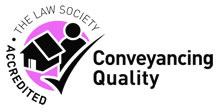Key time limits for debt recovery claims
Every business will experience problems with late or non-payers at some point during its trading life. This can be time consuming and frustrating when what you really want to do is just get on with what your business does best. But how long do you have to negotiate? Can you take court action to recover monies owed? If so, when is the right time?
Negotiations, delays and excuses can sometimes mean years pass before a satisfactory resolution is found when chasing invoices. It is vital that you do not miss the opportunity to be paid, which can happen if you inadvertently miss a time limit set by legislation.
Barry Wood, dispute resolution solicitor with Richard Reed Solicitors provides guidance on the time limits for recovering business debts and emphasises the importance of taking early legal advice to avoid missing key deadlines.
Time limit for bringing a claim
If you have a client or customer that refuses to pay an invoice, then one option is to issue a debt recovery claim at court which will provide you with an enforceable judgment against that client.
However, for reasons of fairness, all debt recovery claims are subject to a time limit. It is vital that you issue your claim before that time limit expires (called the limitation period). If you miss this, your client has an automatic defence which means the debt is effectively written off because it cannot be enforced.
What is the usual limitation period for a standard debt recovery claim?
The limitation period for nearly all debt claims is six years from the date that the debt became outstanding. The clock will stop once a claim is issued in court.
The six-year clock will also restart from the date that the debt is acknowledged in writing (including by email) or you receive a part payment against that debt.
This means that if you receive any payment against the debt at any time, then the six-year clock starts from the date of the last payment.
What are the timings required when you bring a claim?
Once a debt claim has been issued in court, your client will be served with your claim. Usually, the court will provide directions on how the case will be managed at this stage, and they will set a first hearing date, which gives time for evidence to be filed before that hearing.
Once served, your client has 14 days to acknowledge and file a defence.
If a defence is sent to the court, you have 14 days to file any further evidence in reply to that defence.
In reality, either party may need more time to gather and prepare evidence, especially with complex disputes, so the first hearing may be used to ask for an extension.
Pre-action protocols
Before you can bring a claim in court, you are required to follow a certain pre-action protocol. These are guidelines set by the court which have their own time requirements. The timings are similar for companies and individuals, although individuals are given a slightly wider scope. These protocols are aimed at encouraging negotiation and avoiding unnecessary court time and costs.
What happens if we do not follow the pre-action protocol?
Failure to follow the protocol will not stop a claim being brought, but any non-compliance is likely to have an impact on your ability to recover your legal costs later.
The need to comply with the pre-action protocol does not alter the limitation period. If court proceedings must be brought to avoid missing the limitation period, then you will need to apply to the court for a stay to allow for time for you to comply.
What is the timing of the protocols?
A letter of claim needs to be sent to the client before you issue a claim. If they do not reply within 30 days, then you can start court proceedings.
However, if the client replies to say that they are taking advice, or want more information from you, or want time to reach agreement on instalments, you must give them reasonable time to do this.
If agreement is not reached, then you still have to give at least 14 days’ notice of your intention to start court proceedings, unless the limitation period is about to expire.
The insolvency option
If the debt is not disputed, then individual bankruptcy or company winding up may be a better option. If you would like more information on this speak to one of our dispute resolution team on how and when this might be used.
A formal insolvency process is only realistic if there is no significant dispute over the debt. If there is, then it is necessary to let a court decide this first by issuing a claim and obtaining a judgment.
When can you use an insolvency procedure?
It is not necessary to have a court judgment first. You just need to prove the debt is owing and that, even if it is partly disputed, the undisputed part must amount to over £750 for a company, or over £5,000 for an individual.
Timings and the conditions for bankruptcy or winding up
The limitation period is six years from the date the debt became due.
The statutory demand
You must first send a statutory demand to an individual, giving them 21 days in which to pay or dispute the debt. They have 18 days to apply to ‘set aside’ that demand if it is disputed by them. Once 21 days has passed and you have not been notified of any application to set aside the demand, you can issue a petition.
It is not essential to send a statutory demand to a company first, but it is a very good way of establishing that you have an unpaid debt, which is essential for winding up.
The winding up petition or bankruptcy petition
Once a petition is issued then there are strict dates for service and advertising prior to the hearing in court. Your solicitor can ensure that everything is covered, so the petition is not rejected on the day of the hearing.
With an undisputed claim, you are unlikely to have a hearing for at least six weeks from issue, depending on the court timetable.
The options when you are coming up to the limitation period
If you are getting close to a limitation period, then speak to us about issuing court proceedings to stop the clock and preserve your rights.
The options when the limitation period has passed
Technically you can continue to ask for payment. However, you do not have any enforcement options if they refuse. You may still have some negotiating power however, such as agreeing to continue to work with that client if they meet arrears within a specified time.
How we can help
Making a claim to recover a debt is not straightforward, with several options available, all with their own processes and time limits to follow. By taking legal advice early you can assess the most appropriate and cost-effective option for your situation and ensure that you do not fall foul of time limits that might prevent you from recovering your debt.
For further information and assistance, please contact our dispute resolution team on 0191 567 0465 or email: [email protected]









